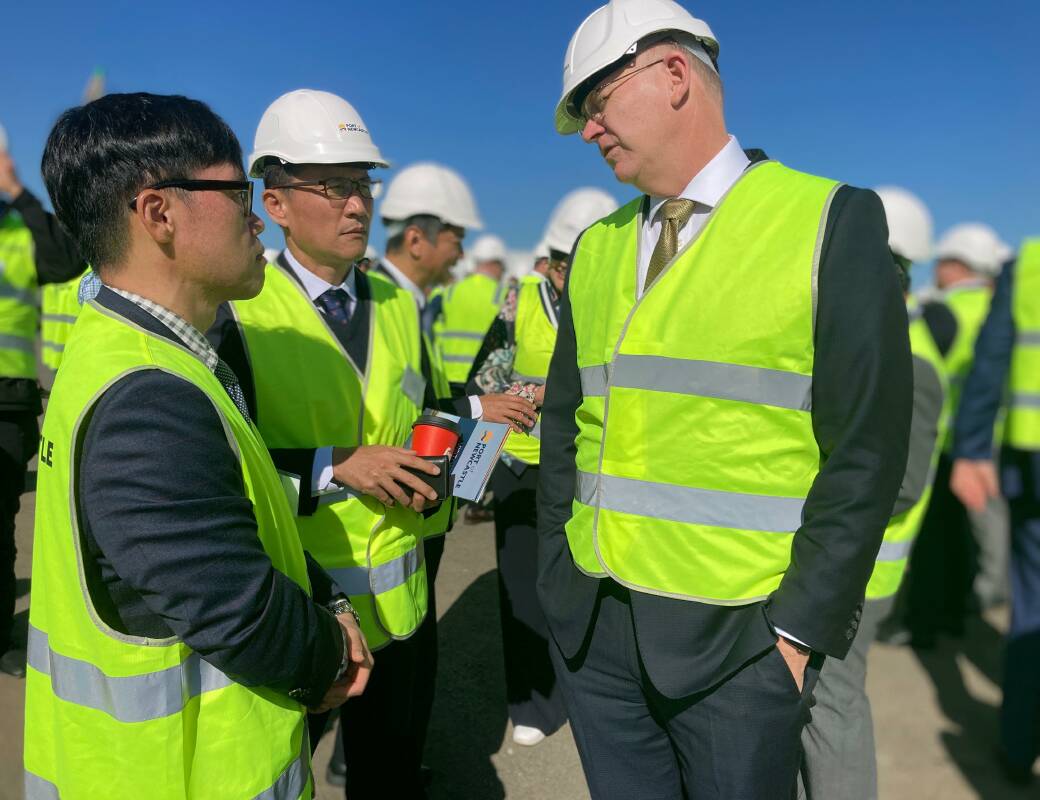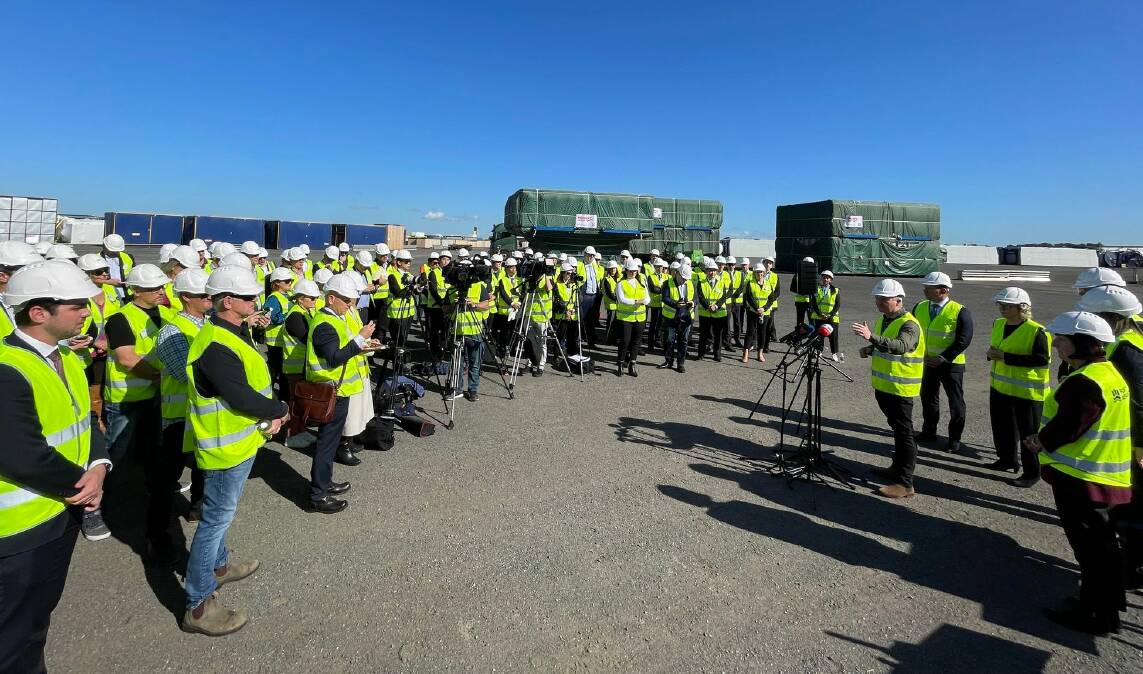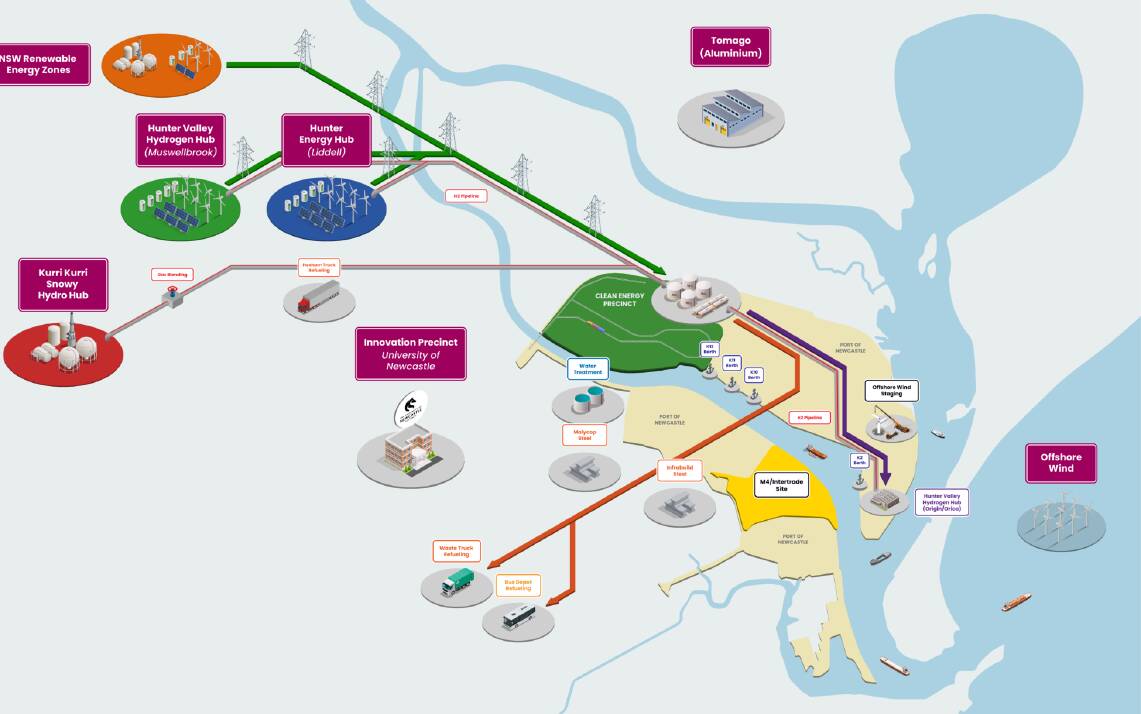
Port of Newcastle has taken a big step towards developing its much-vaunted clean energy precinct after announcing formal agreements with Japanese giant Mitsubishi Heavy Industries, Korean power utility KEPCO and a host of other major domestic and international companies.
Senior executives of the global firms, including eight from Mitsubishi, flew into Newcastle to join Climate Change and Energy Minister Chris Bowen and port executives at a media conference on Wednesday.
Fifteen of the organisations have signed formal memoranda of understanding to investigate commercial opportunities connected with the 220-hectare precinct on Kooragang Island while 15 others have signed letters of intent or support.
The 15 companies who have formalised agreements include Mitsubishi, KEPCO, Japanese shipping firm MOL Group, Fortescue Future Industries, Energy Estate, energy transmission and storage company Lumea, Orica, Origin Energy and Dutch clean energy technology venture firm Platform Zero.

Mitsubishi Heavy Industries senior executive vice-president Dr Hitoshi Kaguchi said the company was "delighted to be involved in a major development project for Port of Newcastle", which he described as a "promising hydrogen hub in Australia".
"We possess various technologies that are considered necessary for the realisation of a hydrogen hub in Port of Newcastle," he said in a media statement.
"The Port of Newcastle has long been an important base for Japan as a resource shipping port, and through this project we will work together with the port to contribute to the decarbonisation of Australia and Japan."
The announcement came on the same day Mr Bowen formally declared a zone for the Hunter offshore wind project, an 1800-square kilometre area off the Newcastle coast set aside for wind turbines.
The federal government has committed $100 million to enabling infrastructure for the port's hydrogen and clean energy hub, which will include shared storage, transport and export infrastructure for renewable energy production inside the precinct and across the broader region.
Mr Bowen said the Hunter would "always be at the centre of Australia's energy generation".
"The world is decarbonising, but there is a future for ports like Newcastle and regions like the Hunter at the absolute centre of that revolution," he said.
Port of Newcastle published concept plans for stage one of the project in May and predicted the precinct would create 5800 jobs.

The first stage, which the port hopes to complete by 2028, will include electrical and water infrastructure, parking and clean energy storage.
Port chief executive Craig Carmody described the project as a "once-in-a-generation" opportunity which would help the port and region diversify away from coal.
"We are standing at the forefront of the development of a new industry," he said.
"Partnerships which bring together infrastructure, investment, knowledge, skills and resources will be critical."
State government renewable energy authority EnergyCo, University of Newcastle and Lake Macquarie City Council are among the other organisations who have signed formal agreements.
AGL, Ampcontrol, Aurizon, BP Australia, Business Hunter, Hunter iF, Hyundai Australia, Infrabuild, Jemena, Keolis Downer, Linde Engineering, NewH2, City of Newcastle, Snowy Hydro and Westrac have pledged support for the precinct.
Many of the companies involved, including Mitsubishi, Andrew Forrest's Fortescue, Orica, Origin and Energy Estate, are pursuing large-scale hydrogen production as a future energy source.
KEPCO vice-president Chan-hyuk Chun said Korea's largest power company was "committed to accelerating its efforts to closely collaborate with Port of Newcastle and effectively develop the clean hydrogen project".
Port chief commercial officer Simon Byrnes said connecting the NSW central west renewable energy zone and Waratah battery to the grid would be critical to delivering the 1.5 gigawatts of power needed at the Kooragang precinct.







